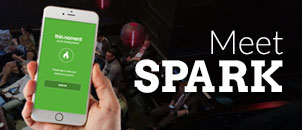Posting the same content everywhere means your content is not optimal
Hello, my name is Jason and I’m a “same content poster.” I rarely differentiate my content by channel.
And now you say, “Hi, Jason!”
Doesn’t it feel like admitting you post the same content on different networks is like attending a support meeting?
We’ve all been told time and time again – and I’ve even told people – that you shouldn’t copy and paste the same content to Twitter, Facebook, LinkedIn and so on.
Each channel has a slightly different audience and, perhaps more importantly, a slightly different purpose for those audiences. Bringing to light the importance of differentiating content by channel. Using the same message in multiple places makes little sense if you’re attempting to optimize the success of your content.
But we all do it. Or at least some of us do. It’s too easy. After all, when you really think about the post, most of them will fly on any channel just the same. What’s the big deal?
Well, the big deal is rooted in why you’re using the network in question and the goal for the communication. Personally, I use Twitter, Facebook and LinkedIn to share good content. I don’t look at how many clicks or shares I get because those numbers don’t matter to me. I’m simply trying to be useful by sharing good content. If people click or like, that’s great. If they don’t, I’m still here as a resource and I get over it pretty quickly.
But for businesses that are focused on driving engagement numbers, I have a different set of recommendations.
How Twitter, Facebook and LinkedIn Differ
To understand why you would differentiate content by channel, you first have to understand how the networks work. Or, more specifically, how your audience uses them.
Twitter is used by most people as a news ticker. They scroll through their stream looking for an interesting comment, headline or topic, stop and respond or click if something grabs their eye. Some users will follow certain accounts because they’re keenly interested in what that account/person/company/celebrity has to say. The vast majority of users seldom respond to tweets not directed at them.
Tweeting out a headline and link to a news story is a good use of Twitter. The sexier the headline or comment about the article, the better. For the most part, people aren’t going to stop and answer questions, respond or chat about your tweet. You can certainly ask them to, but Twitter is very much a stream-flying-by use case.
They see, they click and they leave.
Facebook, however, is a different environment and beckons a different use case. On Facebook, people are still scrolling through their stream looking for an interesting headline or topic, but are also drawn to videos and images. They may stop, consume the content, like or comment on it or even share it with their networks.
Some users will see many comments collected and read through those, perhaps looking for a reason to offer their two cents. They’re taking more time with the content than they do on Twitter. They’re often looking for a chance to contribute to the conversation.
Thus, a mere headline and a link is an ineffective use of Facebook. Here, provided you are trying to drive engagement and participation from your audience, you need to offer a little commentary on the piece, encourage people to chime in, respond and perhaps ensure the image used is eye-catching. Give them reasons to stop and participate. They’re looking for that invitation.
LinkedIn is very similar to Facebook, though I’ve not seen a great deal of engagement on many LinkedIn posts. I think it’s because the business audience is less apt to scroll through the newsfeed looking for conversations to join. They seem to be more apt to scroll a bit looking at a few headlines, will click through and read an article or two if they have time, but then move on to the other uses of LinkedIn.
In a sense, LinkedIn feels like a hybrid of Twitter and Facebook. Usage? Yes. Engagement? Not really. If you want to ramp that engagement up, though, you can do one of two things:
- Focus on the engagement rather than the content while ensuring the headline and topic are very appealing and sexy to the target audience.
- Post the article in respective groups focused on the topic at hand.
The more relevant the audience you put it in front of, the more traction you’ll see in the engagement metrics.
An example of content by channel
Let’s say I wanted to promote this post on my three main social networks. Here’s a sample of what I would use if I were trying to drive engagement metrics:
I admit, I’m a Share-The-Same Contentaholic. Are you? See more of my confession here: {INSERT LINK}
Do you share the same content on multiple social networks? I do but recommend others don’t in most circumstances. Check out how and why on my post at ThisMoment. Then tell me – Do you copy-paste or customize your content? {INSERT LINK}
Do you copy-paste content on multiple social networks? If so, why? And what metrics are you trying to drive? I do, but don’t recommend it to those focused on engagement. Check out why and a longer explanation on my post over at ThisMoment: {INSERT LINK}
Now It’s Your Turn
What approach do you take when posting content? If you vary it, do you see better engagement metrics than when you didn’t? If you don’t, are you satisfied with your engagement metrics? We’re interested in your experiences. Let us know about them in the comments.









